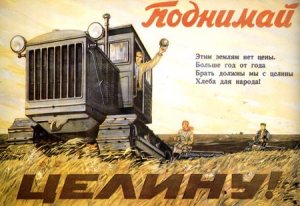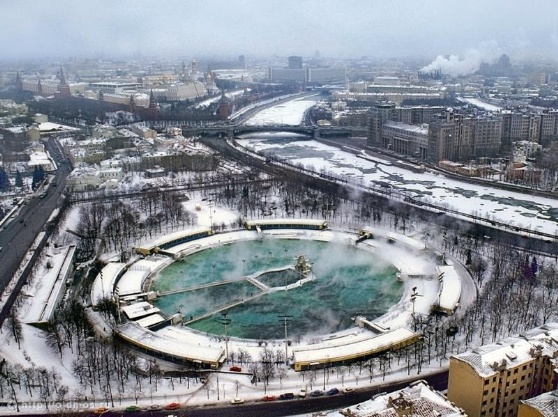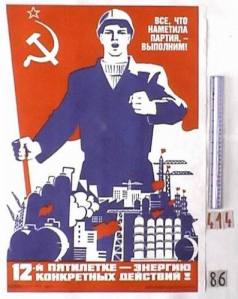One of the biggest wars of the Cold War took place in Afghanistan. Before the Taliban, UN Forces, and the War on Terror brought this remote country into focus, Afghanistan was a hot-spot in the Cold War, “the only time the Soviet Union invaded a country outside the Eastern Bloc – a strategic decision met by nearly worldwide condemnation” (History.State.Gov). In an decade known for the Iran Hostage Crisis, Iran-Contra Affair, and the Reagan Doctrine, the Soviet war in Afghanistan is relatively unknown. The Soviet-Afghan War was a product of Soviet involvement in the Third World and its attempt to install communist regimes in countries that had no business being communist or having a desire in communism. This war had lasting impacts, on both the Soviet Union and Afghanistan, and exemplified the stagnation that the Soviet Union experienced and ultimately led to its fall.

The years leading up to the war were extremely tumultuous for Afghanistan. In 1978 the Soviet Union installed a communist regime in Afghanistan known as the Democratic Republic of Afghanistan. The People’s Democratic Party of Afghanistan was the socialist party in the country and came to power during the Saur Revolution under the leadership of Nur Muhammad Taraki.The PDPA experienced instability when it took control and Taraki was soon killed and replaced by another PDPA leader, Hafizullah Amin. The PDPA policies of forced modernization around the country led to unrest and revolts in the countryside among the Muslim tribes and tribal leaders. Repressive tactics aimed at cracking down on dissidents and mutinies in the army also led to the country’s disintegration and transition into a state of violence and warfare. Muslim tribes and people in opposition to the PDPA soon engaged in war against the central government designed to kick the communist regime out; a war the Afghan Army was not strong enough win.
The war began on December 24, 1979 when the Kremlin decided to take the Afghan situation into its own hands. A few days later the PDPA issued a request to Moscow asking for military support in the country. The dispatch begged Moscow to “protect the gains of the Afghan Revolution…and asked the USSR for urgent political, moral and economic assistance, including military assistance which the government of the Democratic Republic of Afghanistan had earlier repeatedly requested from the government of the Soviet Union” (17 Moments). The Soviets killed Amin and replaced him with a man loyal to Moscow: Babrak Karmal. The Red Army also entered the country in force with 80,000 soldiers and almost 2,000 tanks. Soon, reinforcements brought the total number of Soviet troops in Afghanistan to over 100,000.

Much like the United States in Vietnam, the Soviet Union assumed the war in Afghanistan would end quickly and order would be restored to the country within months. Like a Russian journalist stated in 1989: “But events took an entirely different turn. Contrary to our intentions, we were drawn into an exhausting civil war. Theoretically we were shooting at ‘foreign counterrevolutionary forces,’ but we were hitting Afghan peasants” (Eastview). Soviet forces stationed themselves in cities and urban areas around the country, engaging in patrols and missions in the countryside. The Soviet presence in the country did not stabilize the country as the USSR and PDPA hoped it would and the war dragged on for ten years. The Mujaheddin, the Islamic rebels that fought the Soviets, waged a guerrilla war in the mountains that the western styled Red Army had trouble fighting. By the time the war ended, casualties numbered almost 70,000 killed and wounded. On the other hand, over a million Afghan citizens were killed during the war. The Mujaheddin, with support from the United States and other western countries, prevailed and Soviet forces left the country in 1989, humbled and defeated. The war, much like Vietnam, destroyed Russian nationalism and support for the government. The war also saw increased drug use among the Soviet soldiers and extremely low morale. The inability to defeat a seemingly backwards and non-modern enemy shamed the Soviet Union and a mere two years later, the USSR ceased to exist. Many of the Mujaheddin also ended up joining the Taliban, further engulfing Afghanistan in war that is still going on today.

Sources Used:
http://news.bbc.co.uk/2/hi/south_asia/83854.stm
https://history.state.gov/milestones/1977-1980/soviet-invasion-afghanistan
http://www.understandingwar.org/russia-and-afghanistan
Soviet helicopter picture taken from blogs.bu.edu
Afghan opposition members picture taken from http://defence.pk/threads/afghan-warriors-old-pictures-of-afghan-soviet-war.159418/
Soviet withdrawal picture taken from http://www.britannica.com
















